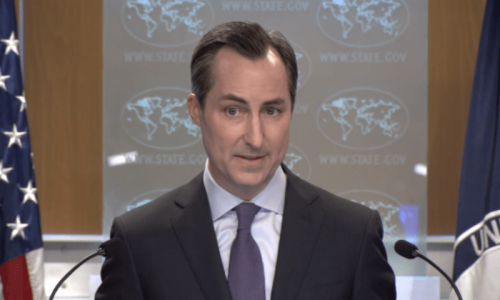OUR progress in 75 years ranks poorly even regionally. How will it be in our next 25 years’ run-up to 100 years of freedom? Futures studies review current trends to predict the future. Social scientists often fail to even review the past well. Their forays into the future are even more iffy. But by giving multiple scenarios and not one outcome, futures studies give useful insights. I review six key trends.
Demographic: Our numbers may hit 340 million by 2050 against more than 210m now. Some say demographics cause all the crises but they are actually caused by elite politics that exploits the poor, leading to big families. We’ve quadrupled since 1971. Absolute poverty though fell to one-fourth from near 50 per cent to 10-15pc despite slow growth and misrule. Apt policies make demographics a dividend, bad ones a misery. Already, we have the second most illiterate kids globally.
Read more: Experts alarmed at country’s population growth rate
Ecological: By 2050, climate change will destroy fertile soil, cause water wars and increase disasters. As one of its key victims, we may face more mega emergencies, epidemics, migration and conflict as more people chase fewer goods.
Read more: Climate change adaptation critical for Pakistan: experts
Economic: We suffer from long-run slow GDP and job growth, high twin deficits, huge debt and low innovation and competitiveness. Our brief growth eras came via ties with big powers that gave more pain than gain. Ties with the US seem cut beyond repair. China is now our big freebies hope. The US at least aided many states to grow even if it hurt others but China has harmed many states. Our free trade and CPEC pacts upped our external deficit. Ties with China incur US ire. CPEC and Central Asia links via China look like hype. It is also stricter than US with freebies. As these shrink, we still lack Bangladesh’s art of growing steadily without them. A global move away from oil may cut Saudi inflows. So the economy shows few good trends and may fail to tackle the threats mentioned.
A review of six key areas shows negative trends.
Social: ‘Religiosity’ and ‘patriotism’ as well as extremism goad hordes to sacrifice key national interests. The TLP reflects this trend. It could cause huge harm, more than the TTP, as it expands its faith agenda, street power and electoral clout in key Punjab and Karachi areas. A state can’t be both an economic and extremism hub.
External: Extremist trends resemble those seen in other religions and belief systems in the region — all oppose yet feed each other, making this area the most unstable in terms of extremism. India-Pakistan enmity is the main global nuclear risk in future.
Read more: Global warming, nuclear winter
Political: Politics is society’s avenue to adopt apt policies against all threats. But for us, it poses threats itself. Political legitimacy via free polls gives political stability, then good policies and finally progress. We are yet to attain even the first step. Our establishment is accused of rigging 13 of 15 national polls by unleashing extremism while leashing liberal and even centrist parties. The 2008-2018 era had political legitimacy which is why it was our best era despite much misrule. But it was nixed and a hybrid regime imposed whose outcomes are worse.
Editorial: The last few weeks have savaged the PTI's perception in terms of governance and political stability
The best governance our society can produce naturally in the near term is the weak elitist one offered by parties like the PPP and PML-N, with liberal forces, being too small to rule, pushing them to make good policies. Even this best level governance will struggle to tackle the threats we face. However, attempts to replace and improve it artificially will only result in worse misrule, like today’s hybrid or even extremist politics. Ethnic gripes abound too from Punjab’s growing sway. All five elected prime ministers and three army chiefs since 2008 belong to the province.
So a review of six key realms shows positive trends in not even one, mainly due to autocracy. Hardly any other state faces this grim mix of demographic and 11 ‘Es’ — ecological, external, enmity, economic, extremism, emergencies, education, epidemics, establishment, ethnic and elitism issues.
These may cause huge future crises that eclipse our many past ones. The worst scenarios are all under autocracy: nuclear calamity, Libya type fate, or more likely a Myanmar one. Political legitimacy promises the best one. We may catch up with Bangladesh and India, but partially as even our best governance levels will be so-so and threats will remain high. An Asian Tiger future, the wild hope of our woolly middle class, is a mirage. But so it is for our neighbours if that calms hurt national egos. By 2050, being much worse is possible, but not being much better.
Progress lies in political legitimacy, the first step. The worst ‘E’ is establishment as it blocks this. Society and external powers must push it on this, for a nuclear nation of over 200m hit by many huge threats may create a global calamity.
The writer is a political economist with a PhD from UC Berkeley.
Twitter: @NiazMurtaza2
Published in Dawn, November 16th, 2021















































